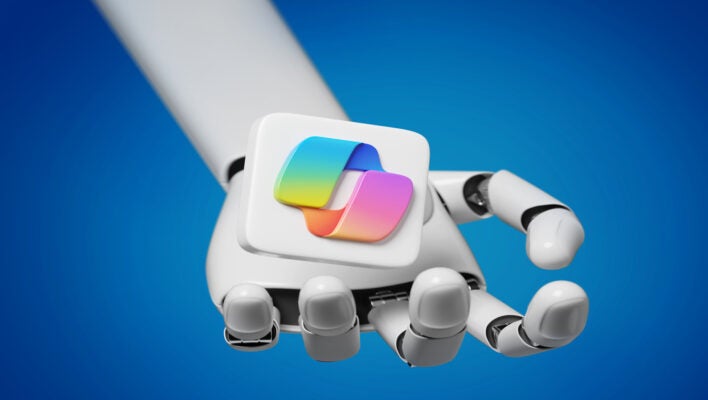The life of a content creator is a relentless cycle of ideation, production, editing, optimization, and analysis. This “content treadmill” can lead to burnout, leaving little room for the pure creative spark that started the journey. However, a seismic shift is underway. Major content platforms are no longer just venues for hosting videos; they are evolving into intelligent ecosystems, embedding powerful AI directly into the creator workflow. This new wave of integrated AI tools promises to act as a co-pilot, automating tedious tasks, unlocking global audiences, and providing data-driven insights on an unprecedented scale. From conversational analytics that answer complex questions in plain English to generative AI that dubs content into new languages with synchronized lip movements, the landscape is changing. This article provides a comprehensive technical deep-dive into this revolution, exploring the tools, the underlying technology, and the profound implications for creators everywhere. This is the forefront of AI Tools for Creators News, a development as significant as the advent of high-definition video.
The New Creator Toolkit: An Overview of Platform-Integrated AI
The latest suite of AI tools being integrated into creator platforms can be broadly categorized into three core functions: simplifying analytics, globalizing content, and optimizing performance. These aren’t standalone third-party apps; they are native features designed to work seamlessly within the creator’s existing dashboard, creating a frictionless and powerful new workflow. This integration is a key differentiator, reducing the complexity and cost barriers that previously kept advanced capabilities out of reach for many.
Analytics and Insights Through Conversation
For years, creators have had to be part-time data scientists, navigating complex analytics dashboards to decipher audience behavior. The new approach leverages Large Language Models (LLMs) to create a conversational interface—essentially a chatbot for your channel’s data. Instead of filtering through charts, a creator can now ask direct questions like, “What were my top 5 videos among viewers in Germany last month?” or “Suggest some video ideas based on what my subscribers are searching for.” This AI assistant can synthesize data from multiple sources, identify trends, and present them in an easily digestible format. This is a major leap forward, transforming raw data into actionable creative strategy. A creator focused on AI Phone & Mobile Devices News could use this to quickly identify which device features are generating the most comments and engagement, guiding their next review.
Content Globalization with AI-Powered Dubbing
Breaking language barriers has traditionally been a costly and time-consuming process involving professional translators and voice actors. New AI-powered dubbing tools are set to democratize this process entirely. Using advanced speech-to-text, translation, and speech synthesis models, these tools can automatically translate a video’s audio into dozens of languages. The most groundbreaking aspect is the integration of generative video technology to alter the creator’s lip movements to match the newly generated audio track. This creates a seamless, natural viewing experience for international audiences, making the content feel native rather than overdubbed. A channel dedicated to Health & BioAI Gadgets News could instantly make its complex technical explanations accessible to a global audience, dramatically expanding its educational reach and market potential.
Performance Optimization via AI-Driven A/B Testing
A video’s thumbnail and title are its digital storefront, and their impact on click-through rate (CTR) is enormous. Guesswork has long dominated this crucial step. AI is now automating and refining this process through integrated A/B (or A/B/C) testing tools. A creator can upload multiple thumbnail options for a single video, and the platform’s AI will automatically show different versions to segments of the audience. It then analyzes real-time performance data—like CTR and audience retention—to identify the winning variant and automatically set it as the default for all viewers. This data-driven approach removes emotion and bias from the decision-making process, ensuring every video has the best possible chance to succeed. This is particularly valuable for creators in competitive niches like AR/VR AI Gadgets News or AI in Gaming Gadgets News, where a slight edge in CTR can lead to a significant increase in views.
Under the Hood: A Technical Breakdown of Creator AI
![AI-powered content creation tools - 14 Must-Have AI Content Creation Tools [Beyond ChatGPT]](https://www.teamly.com/blog/wp-content/uploads/2023/05/ai-content-creation-tools.png)
The magic of these new tools lies in the convergence of several sophisticated AI disciplines. Understanding the technology behind them helps creators appreciate their capabilities and limitations. These systems are far more than simple algorithms; they are complex models trained on vast datasets, representing the cutting edge of applied artificial intelligence.
The Natural Language Processing (NLP) in Conversational Analytics
The AI analytics assistant is powered by advanced NLP and Transformer-based architectures, similar to those used in models like GPT-4. When a creator asks, “Why did my last video about AI Security Gadgets News underperform?” the system performs several steps:
- Intent Recognition: It first deciphers the core intent behind the query—the creator wants a comparative analysis and causal factors.
- Entity Extraction: It identifies key entities like “last video,” “underperform,” and the specific topic.
- Data Retrieval: The AI formulates a complex query to the backend analytics database, pulling metrics like retention curves, CTR, audience demographics, and traffic sources for that video and comparing them against the channel’s average.
- Natural Language Generation (NLG): Finally, it synthesizes the retrieved data into a coherent, human-readable response, such as, “Your latest video saw a 30% drop in audience retention in the first minute compared to your average, and its CTR was lower with viewers aged 18-24. This may be because the introduction was slower-paced than your typical content.”
This process transforms a static dashboard into a dynamic analytical partner, a core theme in the broader AI Assistants News space.
Generative AI and Synthesis for Realistic Dubbing
AI dubbing is a multi-stage generative process. First, the original audio is transcribed and translated. The key innovation lies in what follows:
- Voice Cloning: The AI analyzes the creator’s unique vocal timbre, pitch, and cadence. It then uses a text-to-speech (TTS) model to generate the translated script in a synthetic voice that closely mimics the original creator’s. This maintains a sense of personality and brand consistency across languages. This technology is closely related to developments in AI Audio / Speakers News.
- Lip-Sync Generation: This is the most visually complex part. A computer vision model analyzes the phonemes (the distinct units of sound) in the new audio track. For each phoneme, it knows the corresponding mouth shape (viseme). A generative adversarial network (GAN) or a diffusion model then subtly re-renders the pixels around the creator’s mouth in the video to match the required visemes, frame by frame. The model must ensure the new mouth movements blend seamlessly with the rest of the face, maintaining natural expressions and lighting. This is a practical application of research seen in AI-enabled Cameras & Vision News.
Predictive Analytics and Computer Vision for Thumbnail Testing
The AI behind thumbnail A/B testing doesn’t just measure results; it learns from them. The system employs computer vision models to deconstruct each thumbnail into a set of features: color composition, contrast, presence of faces, text readability, emotional expression, and object recognition. As it runs tests across millions of videos, it builds a predictive model that correlates these visual features with user engagement. For example, it might learn that for content related to AI Kitchen Gadgets News, thumbnails with bright, high-contrast images of food outperform those showing the gadget alone. This predictive capability could eventually lead to the AI offering proactive suggestions, like “Consider increasing the text size or using a thumbnail with a human face to potentially boost CTR by 15%.” This mirrors trends in AI Monitoring Devices News, where predictive insights are key.
The Ripple Effect: Implications for the Creator Economy
The integration of these powerful AI tools is not just an incremental update; it represents a fundamental shift in the nature of content creation and consumption. The implications will be felt across the entire digital media landscape, from individual creators to global audiences.

Democratizing Global Reach and Accessibility
For years, only the largest media corporations could afford professional, high-quality localization. AI dubbing shatters this barrier, allowing a solo creator reviewing AI Pet Tech News from their home office to reach audiences in Japan, Brazil, and France with content that feels native. This fosters a more inclusive and diverse global content ecosystem. Furthermore, automated translation and dubbing significantly enhance accessibility. Viewers with hearing impairments or those who prefer to consume content in their native language will have access to a vastly larger library of information and entertainment. This aligns with the important work being done in the field of AI for Accessibility Devices News.
The Creator as Creative Director
By automating the most repetitive and data-intensive tasks, AI frees creators to focus on what they do best: being creative. The role of the creator will increasingly shift from a “jack-of-all-trades” to that of a creative director. Instead of spending hours poring over analytics, they can have a five-minute conversation with their AI assistant to get the key takeaways. Instead of manually testing thumbnails, they can trust the AI to optimize for performance. This allows more time for research, storytelling, community engagement, and conceptualizing the next big project, whether it’s about Autonomous Vehicles News or AI Gardening / Farming Gadgets News. The AI becomes the technical and analytical department, while the human remains the creative heart of the operation.
New Frontiers in Content and Technology
This wave of AI integration is just the beginning. The same underlying technologies can be extended to other areas. Imagine AI-powered editing assistants that can automatically create short-form clips from long-form videos, identify and remove filler words, or suggest B-roll footage based on the video’s script. The data gathered from these systems will also fuel the development of even more advanced tools. As platforms understand content on a deeper level, they can improve content discovery and recommendation engines, connecting viewers with niche content like AI Toys & Entertainment Gadgets News or AI Research / Prototypes News with greater precision than ever before.

Navigating the AI Frontier: Recommendations and Considerations
While the potential of these AI tools is immense, creators must approach them with a strategic and critical mindset. They are powerful assistants, but they are not infallible. Understanding their strengths and weaknesses is key to harnessing their full potential without sacrificing quality or authenticity.
Best Practices for Leveraging AI Tools
- Augment, Don’t Abdicate: Use AI as a starting point, not a final decision-maker. Let the AI assistant suggest video topics, but use your human intuition and audience knowledge to make the final choice. Review AI-generated dubbing for accuracy and tone, as cultural nuances can be lost in translation.
- Focus on Iterative Improvement: Use the data from A/B testing to develop a deeper understanding of what your audience responds to. Don’t just accept the winning thumbnail; analyze why it won. Was it the color scheme? The facial expression? The text font? Apply these learnings to your future creative work.
- Ask Better Questions: The quality of insights you get from a conversational AI depends on the quality of your questions. Be specific. Instead of “How can I grow my channel?” ask, “Which of my videos on Smart Home AI News had the highest audience retention among female viewers, and what topics did they cover?”
Common Pitfalls and How to Avoid Them
- The Authenticity Trap: Over-reliance on AI can lead to sterile, over-optimized content that lacks a human touch. Your unique voice and personality are your greatest assets. Ensure that AI is streamlining your process, not dictating your creative voice. An AI-dubbed voice, even if it mimics your own, may lack the genuine emotion of your original performance.
- Algorithmic Bias: AI models are trained on existing data, and they can inherit and amplify biases present in that data. An AI might suggest topics that are already popular, discouraging experimentation with new or niche ideas. It’s crucial to balance AI recommendations with your own creative vision to avoid creating an echo chamber.
- Data Misinterpretation: While AI can surface correlations, it doesn’t always understand causation. A video’s success might be due to an external event, not just the thumbnail you tested. Always apply critical thinking to the insights provided by your AI assistant.
Conclusion: The Dawn of the Creator Co-Pilot
The integration of sophisticated AI tools directly into content creation platforms marks a pivotal moment in the creator economy. This is not about replacing human creativity but augmenting it. By automating data analysis, breaking down language barriers, and optimizing content performance, these tools empower creators to work smarter, reach further, and focus more on the art of storytelling. From those covering broad topics like Robotics News to niche specialists in AI Sleep / Wellness Gadgets News, every creator stands to benefit. The future of content creation is a collaborative one, a partnership between human ingenuity and artificial intelligence. The creator is no longer just a pilot but the captain of a sophisticated vessel, with an AI co-pilot navigating the complex data streams, leaving the captain free to chart the course and explore new creative horizons.










